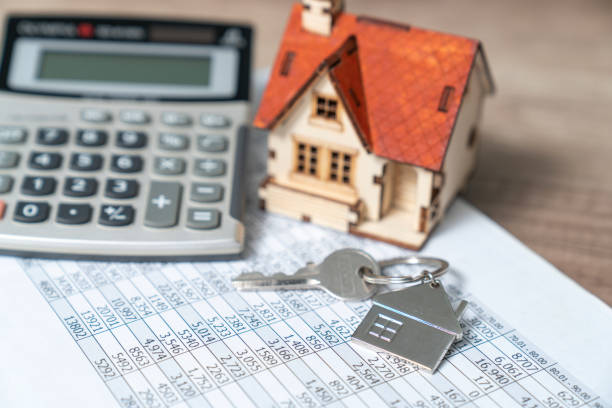What is a reverse mortgage? In the realm of financial tools designed to address the needs of seniors and retirees, the concept of a reverse mortgage stands as a unique and intriguing option.
As people approach retirement age and seek ways to manage their financial well-being, understanding the intricacies of a reverse mortgage becomes essential.
A reverse mortgage offers a distinct approach to tapping into the equity accumulated in one’s home, providing an alternative source of funds that can potentially enhance the quality of life during the golden years.
This article delves into the fundamental aspects of a reverse mortgage.
Whether you’re a homeowner seeking financial flexibility or a curious learner aiming to expand your financial literacy, delving into the world of reverse mortgages opens the door to a wealth of insights and opportunities for strategic financial planning.
Also Read:
How Much Mortgage Can I Qualify For?
How to Calculate Mortgage Payment (Step By Step)
What Is a Reverse Mortgage?
A reverse mortgage is a financial arrangement available to homeowners typically aged 62 or older, allowing them to access a portion of their home equity while retaining ownership.
Unlike traditional mortgages that require monthly payments, a reverse mortgage provides an income stream to the homeowner.
The loan becomes due when the last borrower no longer occupies the home, whether due to moving, passing away, or selling.
Primarily aimed at supplementing retirement income, a reverse mortgage offers flexibility in how homeowners receive funds: through a lump sum, regular payments, a line of credit, or a combination.
The most common type is the Home Equity Conversion Mortgage (HECM), insured by the Federal Housing Administration.
However, certain factors should be considered.
Interest accrues on the loan balance, potentially reducing the home’s equity. Upfront costs and fees can also affect its financial viability.
There’s a possible impact on inheritance as the loan balance grows, and homeowners must still cover property taxes, insurance, and maintenance.
To make an informed decision about a reverse mortgage, homeowners should seek advice from financial experts and weigh its benefits against potential drawbacks.
How Reverse Mortgages Differ from Traditional Mortgages
Reverse mortgages differ fundamentally from traditional mortgages in their purpose, structure, and repayment approach.
Traditional mortgages are used to buy homes, with borrowers making monthly payments to gradually repay the loan.
In contrast, reverse mortgages target older homeowners, enabling them to tap into their home equity while staying in the property.
No monthly payments are required; instead, the lender provides funds to the homeowner.
Traditional mortgages involve interest payments, reducing the principal over time.
In reverse mortgages, interest accrues and is added to the loan balance, potentially leading to an increase in the owed amount.
Repayment of traditional mortgages leads to full ownership, whereas reverse mortgages become due when the last borrower no longer resides in the home.
While traditional mortgages aim to build equity and eventually eliminate debt, reverse mortgages provide liquidity without the necessity of leaving the property.
However, reverse mortgages are subject to eligibility based on age and home equity.
As both types have distinct benefits and considerations, potential borrowers must understand their financial goals and need to determine which mortgage best aligns with their circumstances.
Eligibility Criteria for Obtaining a Reverse Mortgage
To be eligible for a reverse mortgage, applicants must meet certain criteria.
Typically, the primary requirements include being at least 62 years old and owning a home with sufficient equity.
The home must serve as the primary residence, and applicants need to demonstrate the ability to cover property taxes, insurance, and maintenance costs.
Age is a crucial factor as reverse mortgages cater to seniors seeking to access their home equity for retirement funding.
The higher the borrower’s age, the more they can potentially borrow.
The amount of equity in the home also influences eligibility, as reverse mortgage loan limits are often based on the property’s value and the borrower’s age.
Credit history and income level are generally not stringent eligibility factors, as repayment isn’t tied to these factors in the same way as traditional mortgages.
Additionally, certain property types, such as condominiums and single-family homes, are eligible, but there might be specific requirements related to the property’s condition or location.
It’s important to note that while reverse mortgages offer benefits, they also have implications on one’s estate and future financial planning.
As such, potential borrowers should carefully evaluate their eligibility, financial needs, and long-term goals in consultation with financial advisors before pursuing a reverse mortgage.
Steps Involved in Applying for a Reverse Mortgage
Applying for a reverse mortgage involves several key steps.
Firstly, potential borrowers must research and choose a reputable lender or financial institution that offers reverse mortgage products.
After selecting a lender, applicants undergo counseling to ensure they understand the implications and obligations of a reverse mortgage.
Next, the application process begins with submitting the required documentation, including proof of age, homeownership, and property details.
The lender assesses the home’s value to determine the maximum loan amount and proceeds with underwriting.
Once approved, the borrower selects a payment plan—such as a lump sum, monthly payments, or line of credit—and finalizes the loan terms.
An appraisal and inspection might be required, and the lender reviews the borrower’s ability to cover property-related expenses.
After completing these steps, the loan closes, and funds are disbursed to the borrower.
Throughout the process, legal safeguards are in place to ensure the borrower is informed and protected.
It’s essential to consult financial advisors and thoroughly understand the process before proceeding with a reverse mortgage application.
Also Read:
Can Banks Switch Currency on Mortgage Contracts?
Who Owns the House in a Reverse Mortgage?
Conclusion
A reverse mortgage offers older homeowners a unique avenue to access home equity without selling their property.
This financial tool provides flexibility by eliminating the need for monthly payments and offering various disbursement options.
However, careful consideration is crucial due to potential drawbacks such as accruing interest, fees, and its impact on inheritance.
Before embarking on a reverse mortgage, individuals should thoroughly evaluate their financial needs, seek expert advice, and understand the long-term implications to make an informed decision that aligns with their retirement goals and circumstances.














